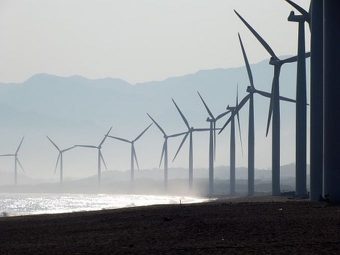
DONG Energy has unveiled plans to install a 2MW battery storage system at its existing Burbo Bank offshore wind farm in the Irish Sea by the end of the year in order to provide demand response services and boost grid stability.
The Danish energy firm said the hybrid system, which it claims is an industry first, will enable the 90MW wind farm to help keep the frequency stable at 50Hz and “maintain the operability of the grid”.
Frequency response is a mechanism used by National Grid to help manage grid stability during changes between peak and low power demand. The frequency of the grid is “a continuously changing variable” that must remain close to 50Hz or it risks damaging home appliances or causing blackouts, DONG explained.
As such, battery storage systems that can help store intermittent renewable power are increasingly seen as a crucial part of the UK’s future low carbon energy mix, offering the opportunity to curb emissions and save bill payers money.
Ole Kjems Sørensen, senior vice president of partnerships and Asset Management at DONG Energy, said he expected the need for smarter, flexible grid systems to grow in the coming years.
“We’re excited to use battery technology to demonstrate this wind power and battery hybrid capability,” he said. “With eight existing offshore wind farms in the UK and another four under construction, we expect to leverage further technology improvements and innovations and ensure that DONG Energy supports the stability of grid systems as generation capacity becomes cleaner and more sustainable.”
The announcement follows the official opening of the 258MW Burbo Bank Extension wind farm last month, which incorporates the next generation of giant 8MW MHI Vestas turbines.
Richard Smith, head of network capability at National Grid, agreed ensuring a secure and stable supply of energy would require more flexible electricity services in future. “I’m looking forward to seeing how the DONG Energy solution of storage connected to the offshore wind farm will provide services to help us respond to day-to-day operational challenges and maintain the frequency of 50Hz on Great Britain’s electricity system,” he said.
Source: businessgreen.com

